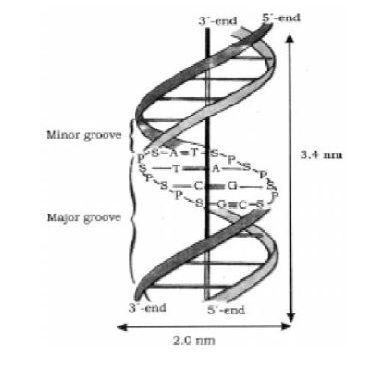Chapter: Basic Concept of Biotechnology : Biomolecules
Structure of Nucleic Acids
Structure of
Nucleic Acids
Like all natural molecules, nucleic acids
are linear polymeric molecules. They are chain like polymers of thousands of
nucleotide units, hence they are also called polynucleotides. A nucleotide
consists of three subunits: nitrogen containing heterocyclic aromatic compound
(calledbase), a pentose sugar and a molecule of phosphoric acid. So a nucleic
acid chain is represented as shown below.

In DNA molecules, the sugar moiety is 2
-deoxyribose, where in RNA molecules it is ribose. In DNA, four bases have been
found. They are adenine (A), guanine (G), cytosine (C) and thymine (T). The
first three of these bases are found in RNA also but the fourth is uracil (U).
The sequence of different nucleotides in DNA is termed as its primary
structure. Like proteins, they also have secondary structure. DNA is a double
stranded helix. Two nucleic acid chains are wound about each other and held
together by hydrogen bonds between pairs of bases. The hydrogen bonds are specific
between pairs of bases that are guanine and cytosine form hydrogen bonds with
each other, whereas adenine forms hydrogen bonds with thymine. The two stands
are complementary to each other. The overall secondary structure resembles a
flexible ladder (Fig. 1.1). This structure for DNA was proposed by James Watson
and Francis Crick in 1953.

Related Topics